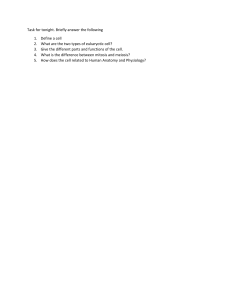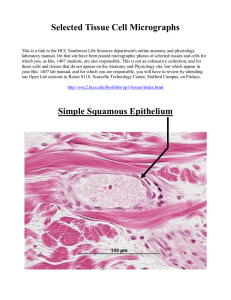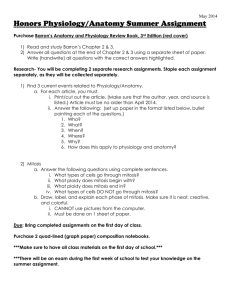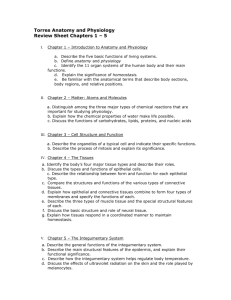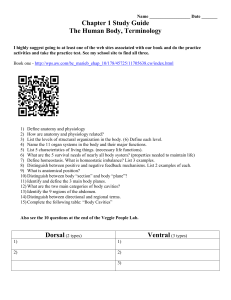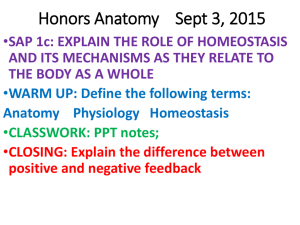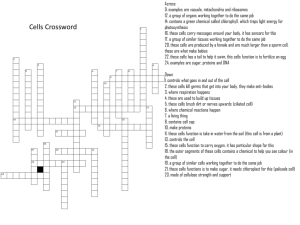Physiology & Anatomy I Exam Review Sheet
advertisement
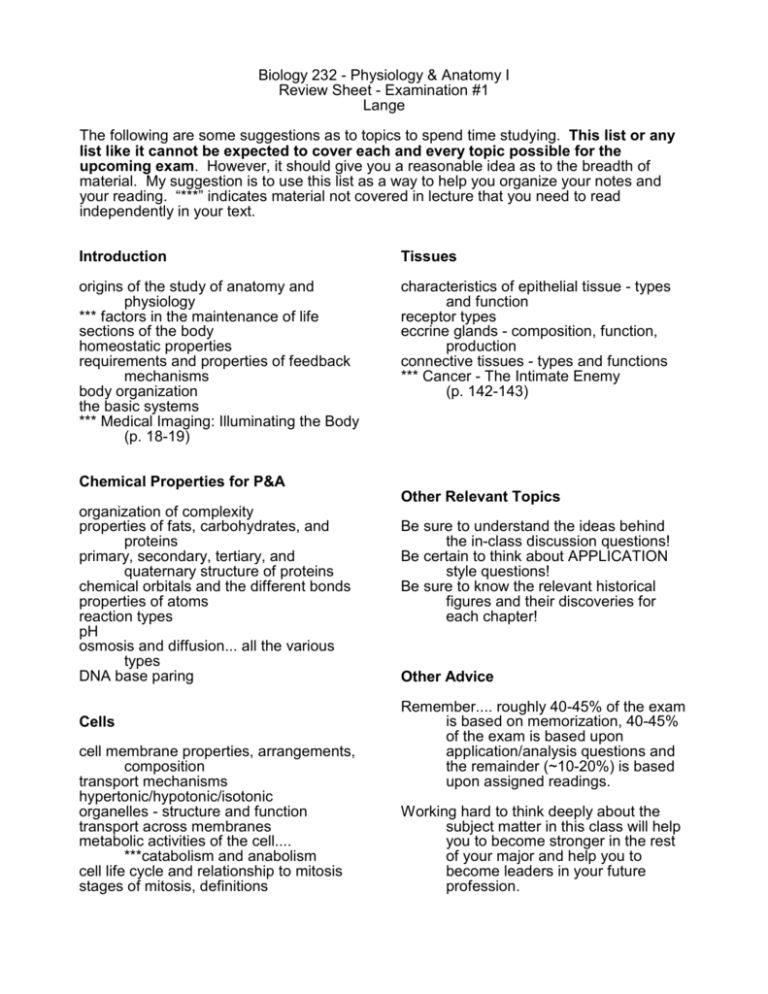
Biology 232 - Physiology & Anatomy I Review Sheet - Examination #1 Lange The following are some suggestions as to topics to spend time studying. This list or any list like it cannot be expected to cover each and every topic possible for the upcoming exam. However, it should give you a reasonable idea as to the breadth of material. My suggestion is to use this list as a way to help you organize your notes and your reading. “***” indicates material not covered in lecture that you need to read independently in your text. Introduction Tissues origins of the study of anatomy and physiology *** factors in the maintenance of life sections of the body homeostatic properties requirements and properties of feedback mechanisms body organization the basic systems *** Medical Imaging: Illuminating the Body (p. 18-19) characteristics of epithelial tissue - types and function receptor types eccrine glands - composition, function, production connective tissues - types and functions *** Cancer - The Intimate Enemy (p. 142-143) Chemical Properties for P&A Other Relevant Topics organization of complexity properties of fats, carbohydrates, and proteins primary, secondary, tertiary, and quaternary structure of proteins chemical orbitals and the different bonds properties of atoms reaction types pH osmosis and diffusion... all the various types DNA base paring Cells cell membrane properties, arrangements, composition transport mechanisms hypertonic/hypotonic/isotonic organelles - structure and function transport across membranes metabolic activities of the cell.... ***catabolism and anabolism cell life cycle and relationship to mitosis stages of mitosis, definitions Be sure to understand the ideas behind the in-class discussion questions! Be certain to think about APPLICATION style questions! Be sure to know the relevant historical figures and their discoveries for each chapter! Other Advice Remember.... roughly 40-45% of the exam is based on memorization, 40-45% of the exam is based upon application/analysis questions and the remainder (~10-20%) is based upon assigned readings. Working hard to think deeply about the subject matter in this class will help you to become stronger in the rest of your major and help you to become leaders in your future profession.
